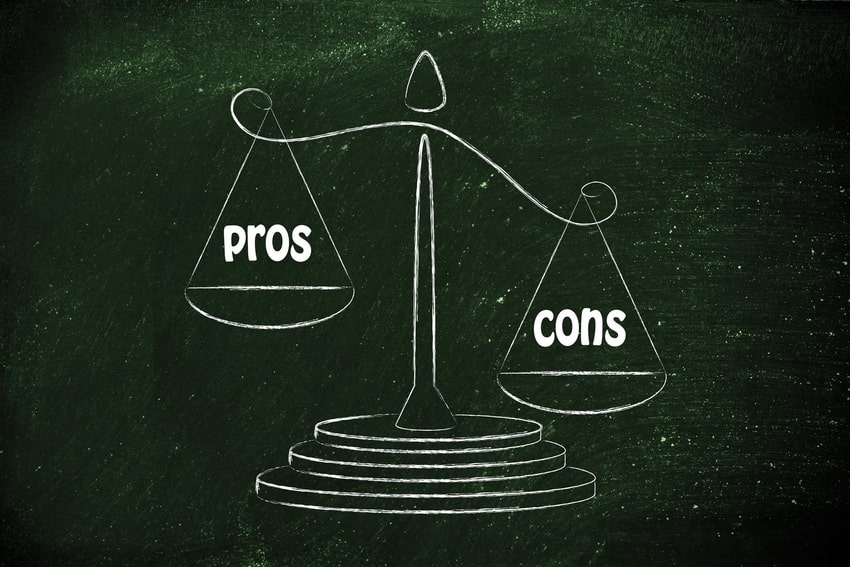
Prisons across America are overcrowded, leading to budget woes, violence, and health issues. Supporters of bond reform insist issues like these could be solved, if we’d end the cash bail system and stop incarcerating poor people who shouldn’t be jailed in the first place. We agree on overcrowding, budget woes, violence, and health issues – but all because an offender can’t afford bail? The topic of bail bonds reform is complicated, and not often solved when you’re playing someone’s heart strings.
Five Cons of Bail Reform
At its core, the notion of bail bonds reform is simple. Cash bail punishes the poor, especially minorities, and keeps prisons overflowing with people who may not even belong there. Voters in a handful of states were convinced to cast their vote in the affirmative, but even with horror stories of recidivism and eroding support, people still need to be aware of potential cons of bail reform. Here are general pitfalls to be aware of.
- Misdemeanor rules that states have implemented don’t mean squat if perpetrators aren’t arrested and booked. Sure, felonies are the main course at dinner for the judicial system in terms of bail amount but ignoring misdemeanors for something new is asinine.
- Some revisions to misdemeanor laws take domestic violence out of the equation as a punishable offense. This is weird or shortsighted because misdemeanors, while less severe than a felony, happen on a far greater scale.
- Defendants booked on a felony or one of the misdemeanor exceptions can be held for 24 to 72 hours, with 36 being average. So if pre-trial services start on a Friday evening, you may be locked up for three days before you can try and post bail – maybe longer if it’s a federal holiday.
- Judicial discretion and interpretation of the law is a problem.
- Judges are supposed to release people under reasonable conditions, but we know judges are human and that doesn’t always happen.
Risk Assessment for All
Risk assessment tools used in criminal justice are all the rage. When it comes to spanking the evil shit of cash bail out of the system, supporters fall all over themselves promoting these tools as the ultimate panacea. But Colorado voters in Jefferson County, Arapahoe County, and Denver County should pay attention. If the alleged ills of bail bonding can be cured by math-based algorithms, then we can introduce you to the guy who knows what really happened on The Grassy Knoll.
What are risk assessment tools? From the Brennan Center for Justice: “There are two types of assessments: clinical and algorithmic. In a clinical assessment, a psychologist or clinician evaluates someone individually. These assessments can be time-consuming, requiring informal evaluations, interviews, and investigations of various factors of a defendant’s life.
“An alternative method is an “algorithmic risk assessment.” Used to improve or completely replace clinical assessments, algorithmic assessments use data, statistics, and social science to categorize a person’s risk level based on their responses to questions or based on data about them. This typically results in a numerical risk score and a designation of low, medium, or high risk.”
Every state in America uses some form of risk assessment to help determine if a defendant will commit a crime once released, or even appear as required for his or her next court date. Each uses different tools, but the onus or responsibility is on lawmakers to fully explain how risk assessment tools are used, when, and the pros and cons of each. Justice is everyone’s responsibility, so feel free to ask questions like these:
- How much should judges rely on risk assessment tools?
- Are factors like a defendant’s socioeconomic or geographic background part of the decision-making process?
- Does a computer-based algorithm violate a defendant’s right to due process?
Alternatives to Cash Bail?
Obviously, and for good reason, every bondsman in the country is against reform that completely abolishes the system of cash bail. Providing a lifeline for defendants who need help posting bail is our livelihood, and how do we support our families and communities if our business model is eliminated? Where do our employees turn when they’re out of work? But there’s other logic at play, too. If cash bail is abolished, how does the judicial system and law enforcement make up for that short fall?
It stands to reason that some reform is in order. Laws passed in the last 10 years or so need to be thoroughly reviewed, dispassionately, for their success and failure – with the goal of understanding the cause of good and bad. Here are cash bail alternatives as reproduced in Courthouse News Service:
- “GoPro shock collars: All accused criminals will be fitted with nonremovable GoPros and shock collars.
- “Judicial malpractice insurance: Just as doctors will order too many tests and operations to avoid being sued, judges are likely to order too many jailings to avoid being ousted in the next election. The way to avoid this is by providing insurance in case of election losses brought on by reasonable leniency. Instead of money damages, the insurers could guarantee ousted judges jobs as insurance arbitrators.
- “Anti-bail. Instead of requiring poor people to put up money they don’t have to prevent them from not appearing in court, pay them money to appear in court.”
Some of these are crazy, but even crazy starts somewhere and coalesces into reasonable. If reform puts a bondsman in an economic bind, perhaps we could put our skills to use recovering fleeing criminals, with our fees paid by well-to-do convicts?